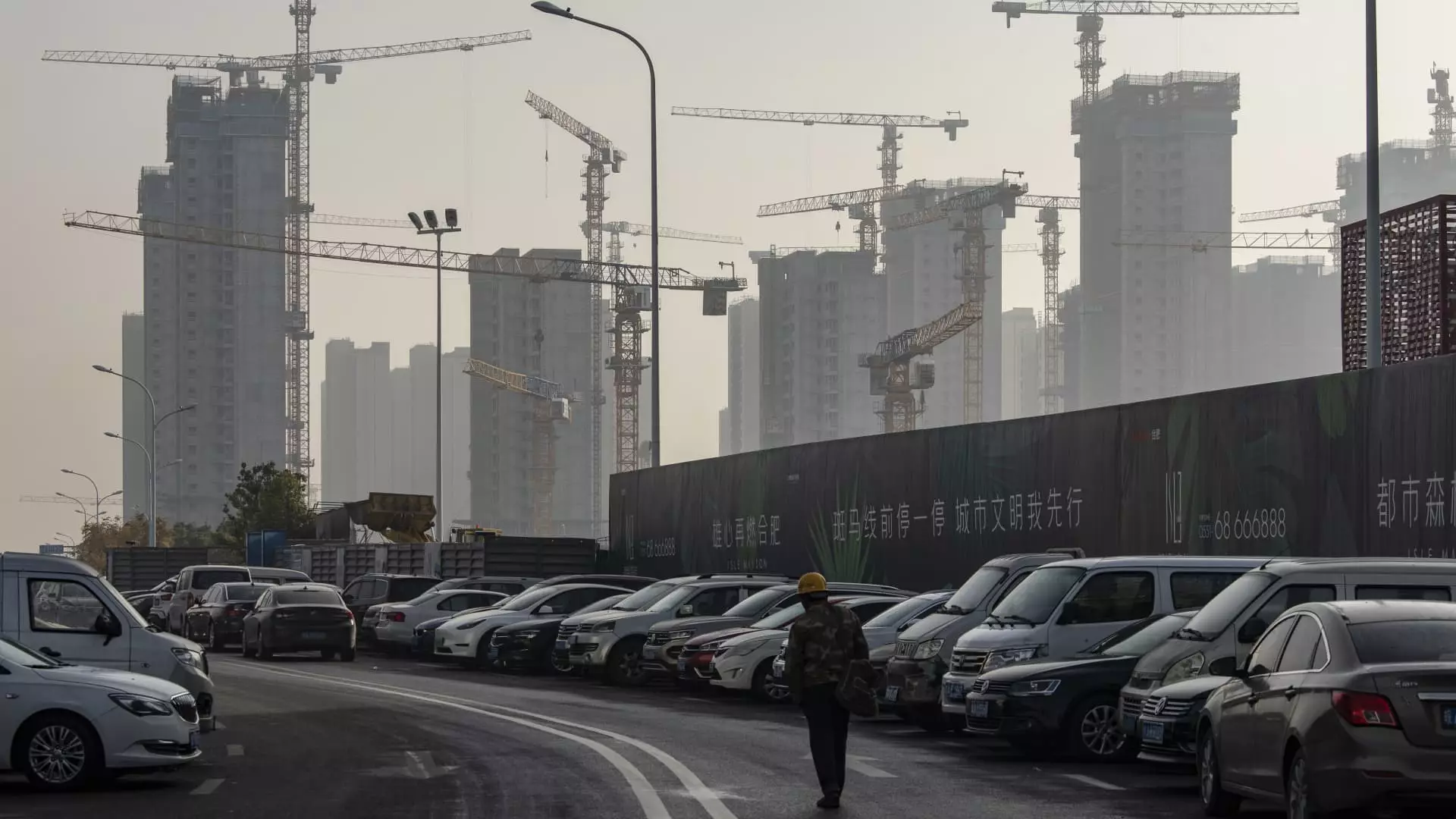The trajectory of China’s real estate sector has become a focal point for economists and investors, as it grapples with unprecedented challenges amplified by a confluence of policy decisions and market dynamics. Despite recent stimulus measures, research from notable firms suggests that a genuine turnaround may not materialize until the latter half of 2025, prompting widespread concern and speculation about the overall health of one of the world’s largest real estate markets.
In late September, President Xi Jinping convened a pivotal meeting, articulating the urgent need to “halt the real estate market decline.” This meeting led to new measures from the Finance Ministry aimed at stabilizing the sector. Despite these efforts, experts caution that extensive fiscal support of approximately 8 trillion yuan ($1.12 trillion) is imperative for any significant recovery. Goldman Sachs analysts have indicated that without such an infusion, the downturn might extend three additional years. The current climate of reduced consumer confidence, primarily driven by rampant debt among developers, highlights the fragility of the market.
The government’s challenge lies in balancing immediate relief for the real estate sector with long-term strategies for economic sustainability. Property previously constituted over 25% of China’s gross domestic product (GDP), intertwining itself with household wealth and local government finances. A systemic undertaking to bolster the real estate market is now juxtaposed against the government’s priority to advance manufacturing sectors, which are seen as more sustainable growth drivers, given the heavy economic reliance on property market performance.
China’s real estate developers have historically engaged in a pre-sale business model, allowing them to finance the construction of homes before they are completed, thereby creating a robust cash flow. However, this model has become untenable after regulatory crackdowns on excessive borrowing and an overall decline in homebuyer demand due to slow economic growth. Historical data indicates that there may be an alarming 20 million pre-sold homes that remain unfinished, accentuating consumer anxieties about real estate investments.
Research has shown that only a fraction of these homes has been delivered successfully; last month, approximately 4 million homes were completed as part of a government initiative. Nonetheless, this is a mere drop in the ocean compared to the vast unresolved inventory crisis facing developers. This dissonance between supply and demand threatens to stifle any potential recovery within the market.
Recent data suggests that while property sales have continued to decline, the rate of contraction is less severe compared to previous months, indicating a possible stabilization. For example, October saw a 4% year-on-year drop in property sales for 22 major cities, a stark contrast to the more than 25% plunge recorded in September. However, analysts remain skeptical that these signs of stabilization herald a comprehensive recovery. The anticipated rebound in home sales and construction volume is expected to be muted, with projected property sales plummeting to around 9 trillion yuan or less this year, potentially dipping further to as low as 8 trillion yuan by 2025.
The prognosis suggests that about 30% of current unsold inventory may never touch the market, thereby necessitating burdensome financial adjustments for banks and investors alike. Coupled with this inventory surplus is a significant decline in developer confidence, evidenced by a staggering 42% reduction in new construction projects since their peak in 2019.
While the Chinese government has initiated various measures to restore confidence in the real estate market, the efficacy of these policies remains a point of contention among analysts. Goldman Sachs warned that inadequate policy execution may spark a further 20% to 25% decline in property prices if effective solutions are not implemented swiftly.
Confidence in the market hinges largely on the effectiveness of the government’s financial support and its ability to effectively tackle liquidity crises faced by developers. Recent efforts, like the People’s Bank of China’s pledge of 300 billion yuan for state-owned enterprises to acquire unsold housing, symbolize an incremental step toward addressing inventory issues. Yet, experts argue this support, tapering at just 4-6% of overall stock, falls short of what is necessary for substantial improvement.
As China’s real estate sector grapples with multiple pressures—from over-leverage and a yawning inventory surplus to waning consumer confidence—the road to stability seems long and fraught with uncertainties. While short-term indicators may hint at stabilization, the essential need for comprehensive government intervention and ongoing market adjustments will dictate the trajectory of one of the world’s most critical economic segments. As observers remain vigilant, the notion of recovery will depend on the timely and effective implementation of policies aimed not just at immediate relieve but at fostering a sustainable economic environment.

